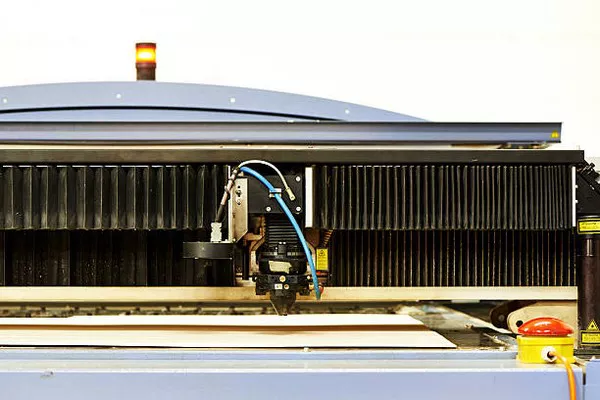Generators are invaluable devices that provide backup power during outages, emergencies, or outdoor events. However, to ensure their longevity and reliability, it’s crucial to protect them from the elements, especially rain. Rain can cause severe damage to generators, leading to costly repairs or replacements. In this article, we will discuss essential tips and techniques for effectively covering your generator to safeguard it from rain.
Choose the Right Location
Selecting an appropriate location for your generator is the first and most crucial step in ensuring it remains protected from rain. Here are some guidelines to follow when choosing the right spot:
a. Elevation: Place the generator on an elevated surface to prevent rainwater from pooling around it. This helps minimize the risk of water seeping into the generator’s sensitive components.
b. Shelter: Ideally, position the generator under a permanent shelter, such as a roof, awning, or canopy. If no shelter is available, consider installing a portable or custom-built enclosure to keep it dry.
c. Gravel Base: Setting the generator on a gravel base can help with drainage, reducing the risk of standing water around the unit.
Invest in a Generator Enclosure
A generator enclosure is a protective structure designed to shield your generator from various environmental factors, including rain. When choosing an enclosure, consider the following factors:
a. Material: Select an enclosure made from durable and weather-resistant materials such as steel, aluminum, or composite materials. Ensure that the enclosure is corrosion-resistant to prevent damage from long-term exposure to moisture.
b. Ventilation: Adequate ventilation is essential to prevent overheating. Look for enclosures with built-in ventilation systems that allow the generator to breathe while keeping it dry.
c. Accessibility: Opt for an enclosure that provides easy access to the generator for maintenance and servicing. Hinged doors and removable panels make it simpler to conduct routine checks.
d. Sizing: Ensure that the enclosure is appropriately sized to accommodate your generator, allowing enough space for proper airflow and maintenance.
Use a Generator Cover
A generator cover is an excellent addition to your rain protection strategy. These covers are typically made of waterproof materials like polyester or vinyl and are designed to fit over your generator securely. Here are some considerations for choosing and using a generator cover:
a. Size: Measure your generator’s dimensions accurately and select a cover that fits snugly over it. An ill-fitting cover can leave parts of the generator exposed to the elements.
b. Fasteners: Look for covers with secure fasteners, such as elastic cords or drawstrings, to keep the cover in place, even in windy conditions.
c. Ventilation: Ensure that the cover has ventilation flaps or mesh sections to prevent condensation buildup inside.
d. UV Protection: Generators can also be affected by prolonged exposure to the sun. Select a cover with UV protection to prevent damage from both rain and sunlight.
Build a Temporary Canopy or Shelter
If you do not have a permanent shelter for your generator, consider constructing a temporary canopy or shelter using materials readily available at your local hardware store. Here’s how to create a simple shelter:
a. Materials: You’ll need a tarp or heavy-duty plastic sheet, poles, stakes, and ropes.
b. Frame: Set up a basic frame using poles or wooden beams. Secure the frame by driving stakes into the ground.
c. Cover: Drape the tarp or plastic sheet over the frame and secure it with ropes or bungee cords. Make sure the cover extends beyond the generator to keep rain from reaching it.
d. Angle: Ensure that the canopy has a slight slant to allow rainwater to run off.
Regular Maintenance
Protecting your generator from rain also involves regular maintenance to keep it in optimal condition. Here are some maintenance tasks to prioritize:
a. Cleaning: Remove dirt, debris, and leaves from the generator’s exterior regularly. Use a soft brush or cloth to wipe down the surfaces.
b. Inspect for Leaks: Check for any signs of water leaks or corrosion, especially after heavy rainfall. Address any issues promptly to prevent further damage.
c. Lubrication: Keep all moving parts well-lubricated to prevent rust and ensure smooth operation.
d. Electrical Components: Check electrical connections and components to ensure they are dry and secure. Moisture can lead to electrical problems.
Use a Generator Mat
Placing a generator mat underneath your unit can be an additional safeguard against rainwater. Generator mats are designed to provide a barrier between the generator and the ground, protecting it from moisture, dirt, and potential damage. When choosing a mat:
a. Material: Look for mats made of durable and waterproof materials,such as rubber or PVC.
b. Size: Ensure the mat is large enough to accommodate your generator and extend slightly beyond its dimensions.
c. Cleanliness: Regularly clean and inspect the mat for any signs of wear or damage. Replace it if necessary to maintain its effectiveness.
Conclusion
Rain protection is vital for maintaining the performance and longevity of your generator. Whether you choose a permanent enclosure, a generator cover, or a DIY shelter, safeguarding your generator from the elements is a proactive step that can save you from costly repairs and downtime in the future. By following these essential tips and techniques, you can ensure that your generator remains a reliable source of backup power, even in the harshest weather conditions. Remember that routine maintenance is just as important as initial protection, so make it a part of your regular generator care routine.

